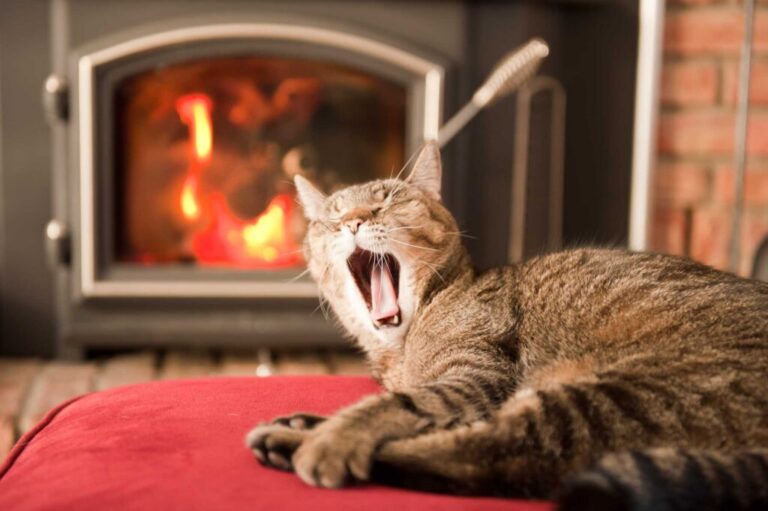How to Keep Your Fireplace in Great Shape

It’s a good idea to have your fireplace and chimney inspected (and swept, if necessary) annually to make sure they are as safe as they can possibly be. Between inspections, however, there are some simple things you can do to keep your fireplace, chimney, or wood stove in the best possible shape between cleanings. Enjoy some chimney maintenance tips:
For all fireplaces and chimneys:
- • Never let a fire burn unattended. Keep a fire extinguisher handy.
- • Keep the area around the fireplace, stove, or insert clear of paper and debris. It can be tempting to place decorations close to the fireplace, but keep them at a safe distance.
- • If your fireplace doesn’t have a glass door, use a wire mesh screen to prevent sparks wandering out of the fireplace. You can buy a freestanding screen at most hardware stores.
- • Install smoke and carbon monoxide detectors in all bedrooms and test them regularly. A common schedule is to test the detectors when you set the clocks twice a year for Daylight Savings time.
When building a fire:
- • Open damper.
- • Make sure the damper is open before starting a fire.
- • Build a fire appropriate to the size of your fireplace. Burning too much wood at once can make overhot fires which damage fireplace components, or which spill out of the fireplace. Extremely small fires do not burn hot enough to completely combust some harmful chemicals in the wood, and can promote excessive creosote buildup.
- • Use seasoned hardwoods that have been aged for six months to a year. “Green” wood creates more creosote.
- • Never burn wet, moldy, diseased or rotted wood, which can give off harmful gases.
- • Don’t burn things that aren’t firewood, including your Christmas tree (which is definitely “green” wood), wrapping paper, boxes, furniture, magazines, or trash. Inks and other substances used to make these items can release chemical fumes.
With masonry fireplaces:
- • Remove ashes from the (cool) fireplace with a metal shovel. Store in ash in a covered, metal container until cool. Dispose of ash properly (it makes great fertilizer!)
- • Regularly inspect the interior of the fireplace for cracks and deterioration. Holes in the firebox can allow heat to pass through the sides of the firebox.
With factory-built or prefabricated wood burning fireplaces:
- • Read and follow the manufacturer’s directions thoroughly. Do not use unapproved appliances (grates, inserts, replacement glass doors). These can void the warranty and/or damage the fireplace.
- • Regularly check the back, sides, and floor of the fireplace for cracks. Remember that cracks which appear small when the fireplace is cool can expand to many times their size when the fireplace is warm. Replace damaged panels promptly.
- • Do not burn anything except wood. Do not start fires using chemical starters (gasoline, etc.).
With wood stoves or wood burning fireplace inserts:
- • Only operate the stove with the door(s) closed. Regularly inspect the door gaskets for damage to ensure that they maintain a tight seal.
- • Before each use, inspect the interior of the firebox for cracked or damaged firebrick. Remember that a crack which is hair-thin when the brick is cool can expand to several times the size when the brick is warmed! Replace broken bricks before using the appliance again.
- • Regularly inspect any exposed chimney pipe to ensure that it has not corroded or separated. A hole in a pipe chimney can allow exhaust gases to enter your home.
- • Regularly remove ash from the (cool) stove using a metal shovel. Store ash in a covered, metal container until cool. Dispose of ash properly.With gas logs, gas fireplaces, or gas fireplace inserts:
- • Clean the glass according to the manufacturer’s recommended schedule. Use only products designed to clean fireplace glass.
- • Know the normal flame patterns of your appliance. If the flames are suddenly much lower or higher than normal, have a professional inspect it.
- • Know how to turn off the gas to a gas appliance in case it cannot be shut off normally. Building regulations generally require a gas cutoff be installed outside of the fireplace in an accessible area.
On the outside of your home:
- • Keep the area around the chimney clear, from top to bottom. Make sure no tree branches or other objects come within 15 feet of the top of the chimney.
- • Install a chimney cap. A properly made cap will keep out rain and snow, birds and animals, while still allowing exhaust gases to escape.
